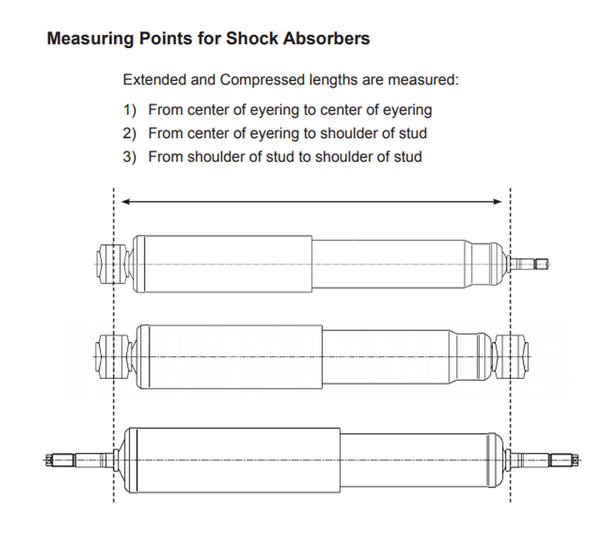How to Measure Your Shocks
We've been running the Rancho RS9000XL shocks on our new Power Wagon for a few thousand miles now, we've got some first impressions and how they stack up against the factory Bilstein shocks that came on this beast.
- With the shocks off the vehicle, get fully extended and fully collapsed lengths, measuring mount to mount.
- With the shocks still on the vehicle, get ride height from mount to mount. Ride height is supposed to be in the middle of the shock travel length, so we're able to see how much travel you should have in both directions at the given height.
- Find a part number somewhere on the shock, this isn't always feasible, but as a last resort it could help out.
Shocks aren't universal in length or fitment. Lifted trucks have longer shocks than factory height trucks. This isn't such an issue figuring out strut or shock lengths on passenger car vehicles, 99% of the time its going to be factory length parts. There are also lowered trucks and cars which may have shorter shocks, bottom line is that you never guess!
Mount types are another important aspect of buying shocks, assuming an eyelet-to-eyelet shock will work on every application doesn't hold true. There are all sorts of mounting configurations, with no real rhyme or reason to it except that was what the manufacturer was feeling during design. There are mount conversion kits in some cases, but there's additional risk with that route in that you're extending out the leverage point of the shock to an aftermarket part (not factory).
See below for the spots to measure your shocks, whether on the vehicle or off.




